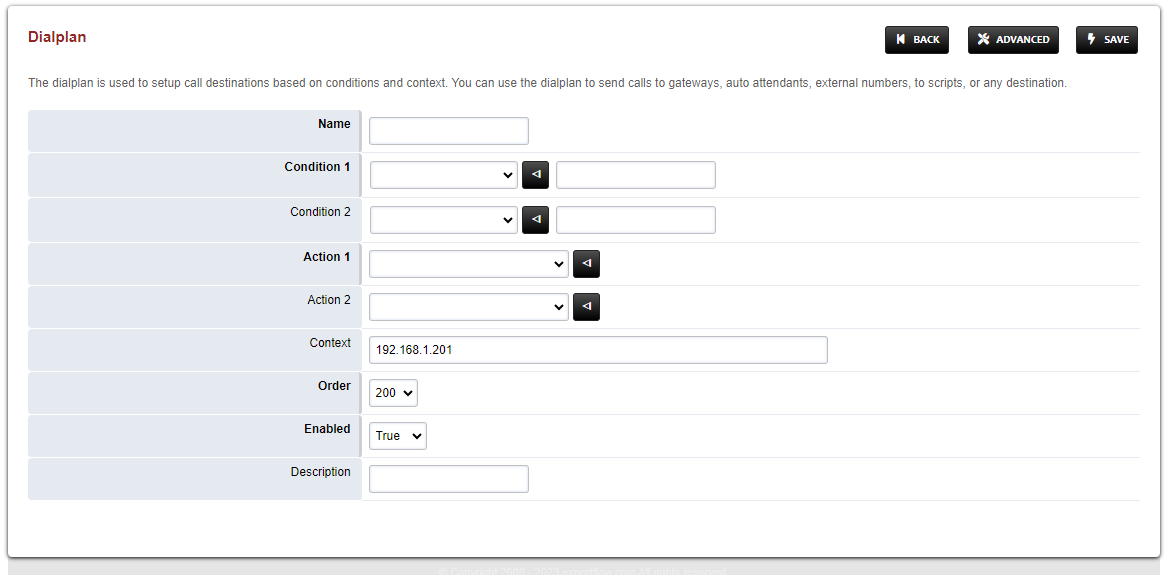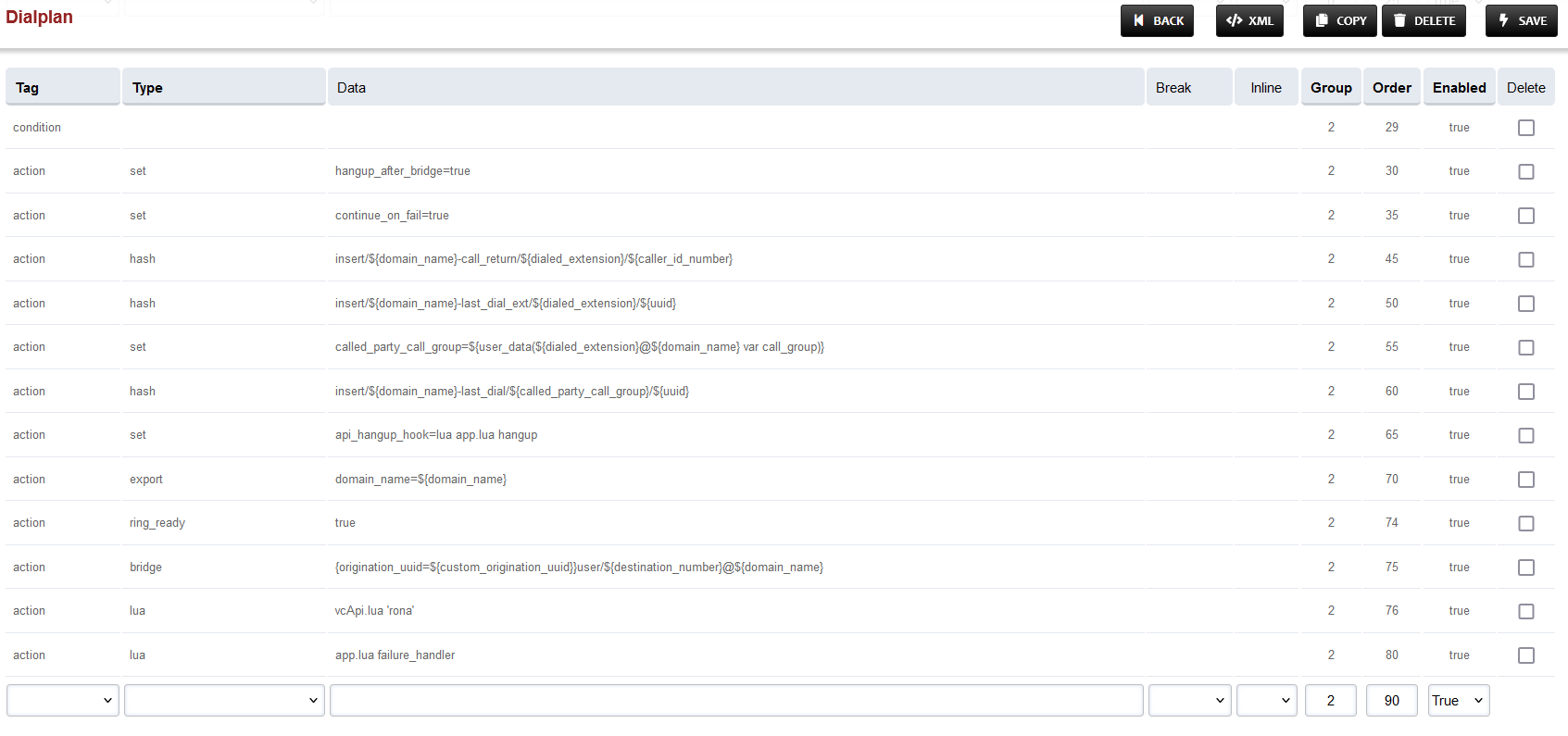CX Voice Upgrade to 4.6
Voice Connector
SSH onto the Debian server on which the Voice connector is installed.
Use command
CODEssh <username>@<server-ip>Enter user password and press ENTER.
Use command
CODEsuEnter root password and press ENTER.
Navigate to the folder where the docker-compose.yml and env.txt files are located for the voice connector.
Open the docker-compose.yml file and replace the image tag with 4.6:
CODEversion: "3.8" services: voice-connector: image: gitimages.expertflow.com/freeswitch/ecx_generic_connector:4.6 container_name: unified-voice-connector ports: - PORT:8080 env_file: - ./env.txt restart: alwaysRun the command
CODEdocker compose up -dConfirm that the docker container is running by using the command
CODEdocker psConfirm that the container is running correctly by opening the logs with command
CODEdocker logs -f containerID
VRS
SSH onto the Debian server on which the Voice connector is installed.
Use command
CODEssh <username>@<server-ip>Enter user password and press ENTER.
Use command
CODEsuEnter root password and press ENTER.
Navigate to the VRS deployment files.
Find the file docker-compose-efcx.yml under recording-solution/docker
Under the line containing vrs-apis:, find the line with image:
Change the field value to gitimages.expertflow.com/voice-recording-solution/apis:14.3.1
While in the recording-solution folder run:
CODEdocker compose -f docker/docker-compose-efcx.yml down docker compose -f docker/docker-compose-efcx.yml up -d
Media Server configuration
SSH onto the Debian server on which the Voice connector is installed.
Use command
CODEssh <username>@<server-ip>Enter user password and press ENTER.
Use command
CODEsuEnter root password and press ENTER.
Confirm git is installed, and install it if is not.
Clone the Media Server scripts repository:
CODErm -r freeswitch-scripts git clone -b 4.6 https://efcx:RecRpsuH34yqp56YRFUb@gitlab.expertflow.com/rtc/freeswitch-scripts.gitNavigate to the cloned repository to access the files:
CODEcd freeswitch-scriptsMove scripts to the Media Server scripts folder:
CODEmv cx_hangup.lua consult_conf.lua set_recording_name.lua /usr/share/freeswitch/scriptsRun the following command:
CODEchmod -R 777 /usr/share/freeswitch/scripts
Login to Media Server web interface.
Open in browser: https://IP-addr, where IP-addr is the IP address of the Media Server.

Add the username and password that was shown upon installation of Media Server and press LOGIN.
Press the IP address in the top right and select the Domain created in the Domain creation section above:

Open the Dialplan Manager section under the Dialplan tab.

Add a new Dialplan by pressing the Add Button on the top.

Fill the form with following details :
Name = Manual_Outbound
Condition 1 = Click the black arrow to the right of the first field. In the first field enter ${sip_h_X-CallType} and in the second field enter ^OUT$.
Condition 2 = Click the black arrow to the right of the first field. In the first field enter ${customer_leg_uuid} and in the second field enter ^$.
Action 1 = Select first item from the list
Save the form by pressing save button on top right Corner.
Re-open Manual_Outbound dialplan.
Delete the line with the Action tag (Click the checkbox in the right and press SAVE in the top right)
Add the following information to this dialplan:
Tag | Type | Data | Break | Inline | Group | Order | Enabled |
|---|---|---|---|---|---|---|---|
condition | ${sip_h_X-CallType} | ^OUT$ | on-false | 5 | true | ||
condition | ${customer_leg_uuid} | ^$ | never | 10 | true | ||
action | set | custom_origination_uuid=${create_uuid()} | true | 0 | 15 | true | |
action | export | customer_leg_uuid=${custom_origination_uuid} | true | 0 | 20 | true | |
action | lua | customer_leg_uuid=${custom_origination_uuid} | true | 0 | 25 | true | |
anti-action | set | custom_origination_uuid=${create_uuid()} | 30 | true |

Set the Context field to the value of the Domain set in the Domain creation section.
Set the Domain field to the value of the Domain set in the Domain creation section.
Set the Order field to 49.
Set the Continue field to True.
Save the changes by pressing SAVE button in top right corner.
Login to Media Server web interface.
Open in browser: https://IP-addr, where IP-addr is the IP address of the Media Server.

Add the username and password that was shown upon installation of Media Server and press LOGIN.
Press the IP address in the top right and select the Domain created in the Domain creation section above:

Open the Dialplan Manager section under the Dialplan tab.

Find and open the local_extension dialplan.
Add the following information to the last group:
Tag | Type | Data | Group | Order | Enabled |
action | ring_ready | true | 1 | 74 | true |
Secondly, replace the Data field in the line with Order 75 with: {origination_uuid=${custom_origination_uuid}}user/${destination_number}@${domain_name}
The result will look like this:

Save the changes by pressing SAVE button in top right corner.
Login to Media Server web interface.
Open in browser: https://IP-addr, where IP-addr is the IP address of the Media Server.

Add the username and password that was shown upon installation of Media Server and press LOGIN.
Press the IP address in the top right and select the Domain created in the Domain creation section above:

Open the Dialplan Manager section under the Dialplan tab.

Find and open the user_record dialplan.
Add the following data to the table, such that the final version looks like the image below:
Tag | Type | Data | Inline | Group | Order | Enabled |
|---|---|---|---|---|---|---|
action | set | record_path=${recordings_dir}/${domain_name}/archive/${strftime(%Y)}/${strftime(%b)}/${strftime(%d)} | true | 9 | 10 | true |
action | export | record_path=${recordings_dir}/${domain_name}/archive/${strftime(%Y)}/${strftime(%b)}/${strftime(%d)} | true | 9 | 15 | true |
action | set | record_name=${uuid}.${record_ext} | true | 9 | 20 | true |
action | mkdir | ${record_path} | 9 | 25 | true | |
action | set | recording_follow_transfer=false | true | 9 | 30 | true |
action | export | recording_follow_transfer=false | true | 9 | 35 | true |
action | set | record_append=false | true | 9 | 40 | true |
action | set | record_in_progress=true | true | 9 | 45 | true |
action | set | RECORD_ANSWER_REQ=true | 9 | 50 | true | |
action | lua | set_recording_name.lua | 9 | 55 | true | |
action | export | ${recording_command} | 9 | 60 | true |

Save the changes by pressing SAVE button in top right corner.
Login to Media Server web interface.
Open in browser: https://IP-addr, where IP-addr is the IP address of the Media Server.

Add the username and password that was shown upon installation of Media Server and press LOGIN.
Press the IP address in the top right and select the Domain created in the Domain creation section above:

Open the Outbound Routes section under the Dialplans tab.

Press the ADD button in the top right.

Set the following fields :
Gateway = The name of the gateway configured above.
Dialplan Expression = The format of the number accepted by the SIP trunk e.g. for 11 digits the format is ^(\d{11})$
Press the SAVE button on top right corner.
Re-open this newly created Outbound Route.
Add the following information to the last group:
Tag | Type | Data | Group | Order | Enabled |
action | ring_ready | true | 0 | 125 | true |
To the last row, where the Type field is bridge, append {origination_uuid=${custom_origination_uuid}} to the start of the field in the Data column. The result will look as below:

Login to Media Server web interface.
Open in browser: https://IP-addr, where IP-addr is the IP address of the Media Server.

Add the username and password that was shown upon installation of Media Server and press LOGIN.
Press the IP address in the top right and select the Domain created in the Domain creation section above:

Open the Dialplan Manager section under the Dialplan tab.

Find and open the Silent_Monitoring dialplan.
Edit the Data column of the first row to have the value ^\*44(.+)$

